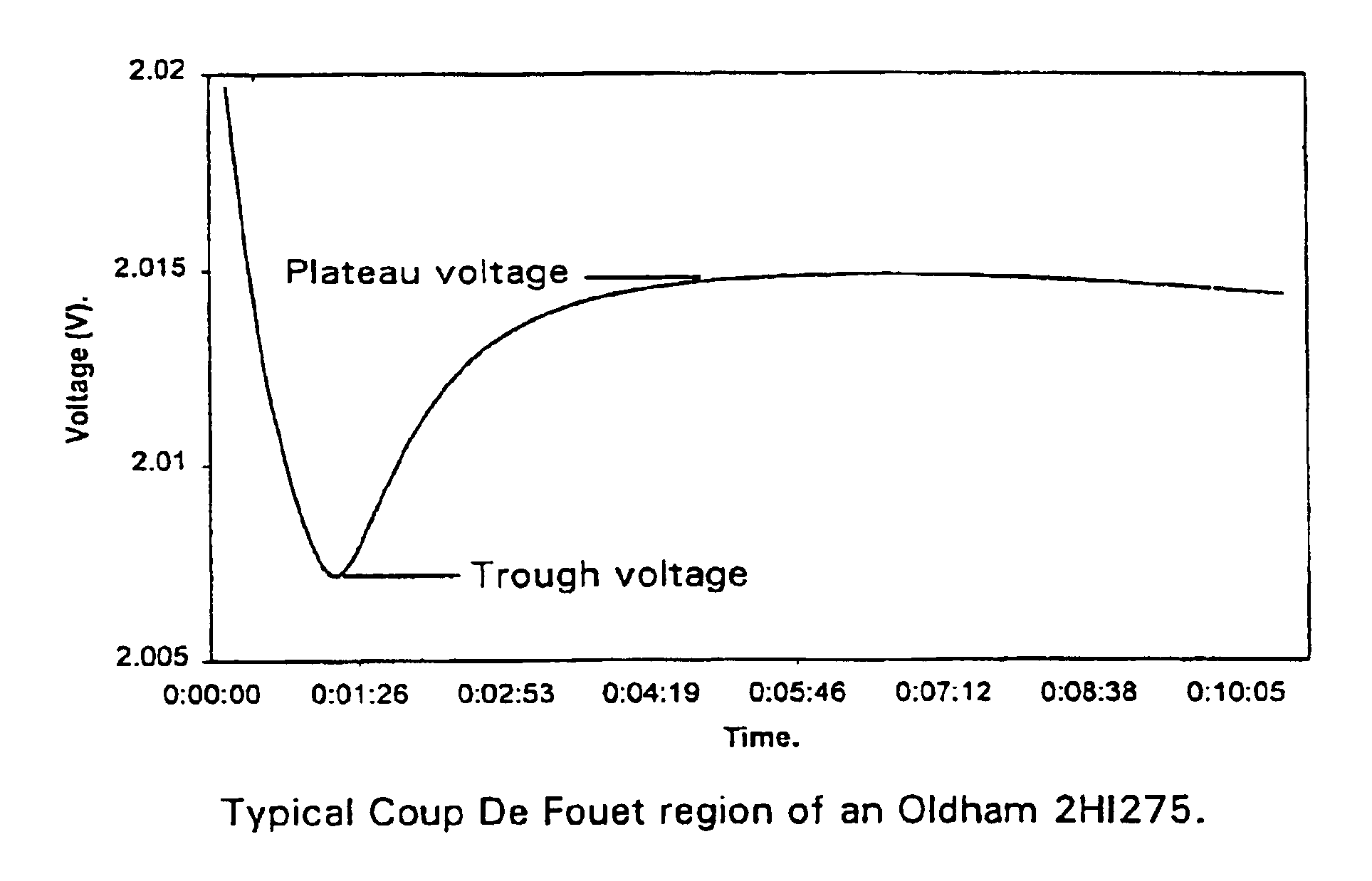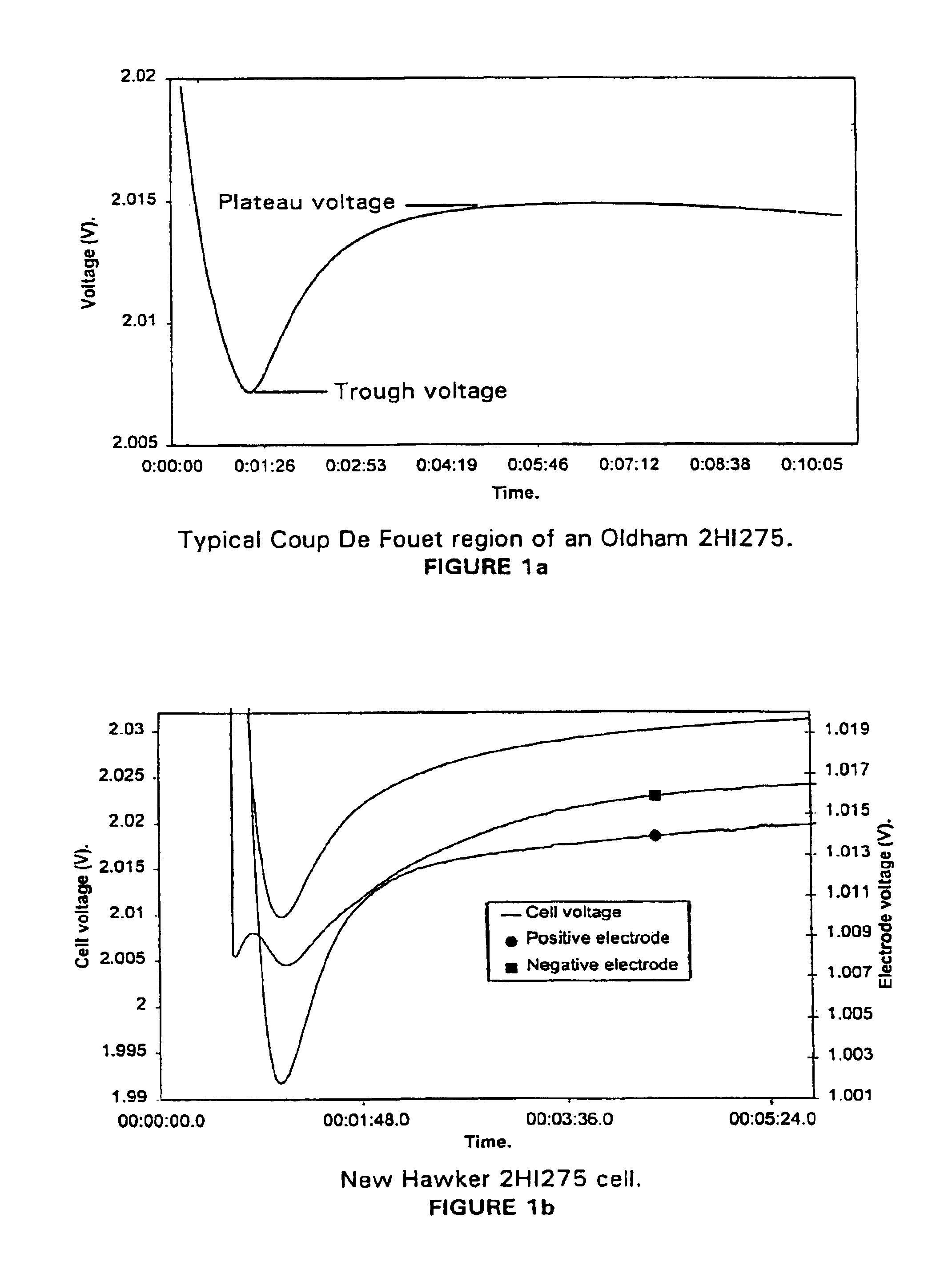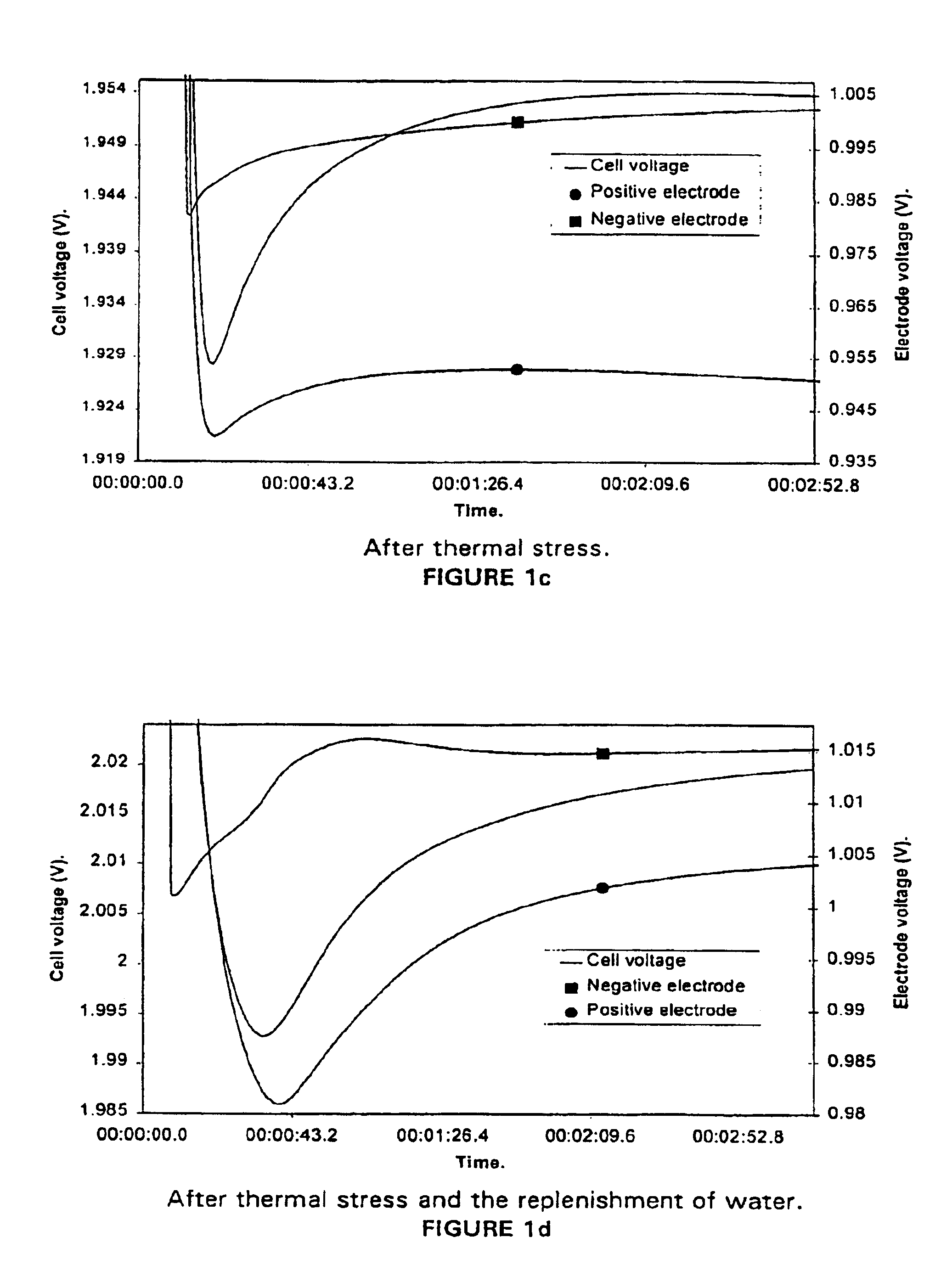Battery capacity measurement
a battery and capacity measurement technology, applied in the direction of electrical instruments, electric vehicles, electrical equipment, etc., can solve the problems of requiring sophisticated and expensive testing equipment, and affecting the service life of batteries
- Summary
- Abstract
- Description
- Claims
- Application Information
AI Technical Summary
Benefits of technology
Problems solved by technology
Method used
Image
Examples
Embodiment Construction
[0054]Examples of tests undertaken in accordance with and to verify the present invention will now be described.
[0055]The Coup De Fouet is an electrochemical phenomenon. The invention is intended particularly for measurement of the capacity, or relative capacity, of a battery of a kind in which electrical discharge results in a chemical reaction that produces reaction discharge products. Such batteries typically exhibit the Coup De Fouet characteristic during initial discharge from a fully charged condition, with the voltage initially reducing to a trough voltage and then increasing to a plateau voltage from which it then decreases progressively as the battery is discharged. In particular this invention may be utilised in respect of electrochemical batteries where at least one of the electroactive components is in the liquid phase and therefore under diffusion control, such as a lead / acid battery where the sulphuric acid takes part in the discharge and recharge reactions. The invent...
PUM
| Property | Measurement | Unit |
|---|---|---|
| temperature | aaaaa | aaaaa |
| voltages | aaaaa | aaaaa |
| voltages | aaaaa | aaaaa |
Abstract
Description
Claims
Application Information
 Login to View More
Login to View More - R&D
- Intellectual Property
- Life Sciences
- Materials
- Tech Scout
- Unparalleled Data Quality
- Higher Quality Content
- 60% Fewer Hallucinations
Browse by: Latest US Patents, China's latest patents, Technical Efficacy Thesaurus, Application Domain, Technology Topic, Popular Technical Reports.
© 2025 PatSnap. All rights reserved.Legal|Privacy policy|Modern Slavery Act Transparency Statement|Sitemap|About US| Contact US: help@patsnap.com



